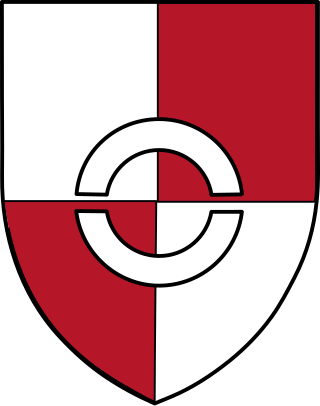Army Group Centre was the name of two distinct strategic German Army Groups that fought on the Eastern Front in World War II. The first Army Group Centre was created during the planning of Operation Barbarossa, Germany's invasion of the Soviet Union, as one of the three German Army formations assigned to the invasion.

The Panzergrenadier Division "Großdeutschland", also commonly referred to simply as Großdeutschland or Großdeutschland Division, was an elite combat unit of the German Army that fought on the Eastern Front in World War II.
The German 206th Infantry Division, was a military unit that served during World War II. Like most German infantry units it had no motorization, and relied on leg and horse mobility.

The 78th Infantry Division, later known as the 78th Assault Division, was a German infantry formation which fought during World War II. After the 78th Assault Division was destroyed near Minsk in July 1944, the 78th Volksgrenadier Division was created.
The XXXIX Panzer Corps was a German panzer corps which saw action on the Western and Eastern Fronts during World War II.

The 14th Infantry Division was a formation of the Germany Army (Wehrmacht) which fought during World War II.

The VI Corps was an infantry corps of the German Army. It fought in several notable actions during World War II.

The Vitebsk–Orsha offensive was part of the Belorussian strategic offensive of the Red Army in summer 1944, commonly known as Operation Bagration. During the offensive, Soviet troops captured Vitebsk and Orsha. A Soviet breakthrough during the offensive helped achieve the encirclement of German troops in the subsequent Minsk offensive.

The Minsk offensive was part of the second phase of the Belorussian strategic offensive of the Red Army in summer 1944, commonly known as Operation Bagration.

The 25th Infantry Division was a military unit of the German Wehrmacht. It was later reclassified to 25th Motorized Infantry Division, and in June 1943 to the 25th Panzergrenadier Division.
The 220th Rifle Division was briefly a Red Army motorized infantry division that was re-organised shortly after the German invasion as a standard rifle division.

The Battle of Rzhev in the summer of 1942 was part of a series of battles that lasted 15 months in the center of the Eastern Front. It is known in Soviet history of World War II as the first Rzhev–Sychyovka offensive operation, which was defined as spanning from 30 July to 23 August 1942. However, it is widely documented that the fighting continued undiminished into September and did not finally cease until the beginning of October 1942. The Red Army suffered massive casualties for little gain during the fighting, giving the battle a notoriety reflected in its sobriquet: "The Rzhev Meat Grinder".

The 352nd Rifle Division started forming in August 1941, as a standard Red Army rifle division, at Bugulma in Tatarstan. When it entered the fighting it was assigned to the Western Front before Moscow, and it would remain in that Front for most of the war; when Western Front was dissolved the division went to one of its successor Fronts and served there until the last few weeks. It took part in the first Soviet winter counteroffensive, then played peripheral roles in the battles around the Rhzev salient, before advancing in the offensive that liberated Smolensk in the summer of 1943. After a series of frustrating attempts during the autumn and winter of 1943-44, the city of Orsha was finally liberated in the opening days of Operation Bagration, and the 352nd was recognized for its role in the battle. Soon after it was further decorated for its part in the liberation of Grodno. In the winter of 1945 the 352nd took part in the invasion of East Prussia and the capture of Königsberg, but in April it finally was swung off its very straightforward combat path when it and its 31st Army were transferred to 1st Ukrainian Front advancing into Czechoslovakia. Soon after the German surrender the division was slated as one of those to be disbanded in place in central Europe.
The 371st Rifle Division was raised in 1941 as a standard Red Army rifle division, and served for the duration of the Great Patriotic War in that role. It began forming in August 1941 in the Urals Military District. It was soon moved to the front lines near Moscow, and took part in the counteroffensive that began on December 5. It spent all of 1942 and the first months of 1943 in the fighting around the Rzhev salient, and after a short break served in the offensive that liberated Smolensk. After a winter of brutal combat on the approaches to Orsha and Vitebsk it was reassigned to 5th Army in 3rd Belorussian Front and took part in Operation Bagration, during which it was recognized for its role in the liberation of the latter city with a battle honor. The division was further distinguished in late July with the Order of the Red Banner for its part in the liberation of Vilnius. In January 1945, it fought its way into East Prussia, and as that campaign was winding down it was moved across Asia, along with the rest of 5th Army, to take part in the campaign against the Japanese Kwantung Army in Manchuria.

The 16th Guards Rifle Division was reformed as an elite infantry division of the Red Army in February 1942, based on the 1st formation of the 249th Rifle Division, and served in that role until well after the end of the Great Patriotic War. It was in Kalinin Front when it was redesignated and remained in the northern half of the front throughout the war. In the summer it was assigned to Western Front's 30th Army to the north of the Rzhev salient and took part in the stubborn and costly struggle for the village of Polunino just east of that town in August. It returned to the fighting in March 1943 in the followup to the German evacuation of the salient, then was reassigned to the new 11th Guards Army, where it would remain for the duration of the war. During the summer offensive against the German-held salient around Oryol it assisted in the liberation of Karachev and received its name as an honorific. By December, after fighting through western Russia north of Smolensk the division was in 1st Baltic Front, attacking south towards Gorodok and winning the Order of the Red Banner in an ultimately unsuccessful effort to seize Vitebsk. By the start of the offensive against Army Group Center in the summer of 1944 the 16th Guards had been redeployed with its Army to the south of Vitebsk as part of 3rd Belorussian Front, where it would remain for the duration. Driving westward during Operation Bagration the division helped to liberate the key city of Orsha and then drove on towards Minsk. With its Army it advanced through Lithuania to the border with East Prussia, being further decorated with the Order of Suvorov for its crossing of the Neman River. As part of the East Prussian Offensive the 16th Guards entered that heavily-fortified region and helped gradually break the German resistance there, particularly at Insterburg and Königsberg, ending the fighting at Pillau. The 16th Guards remained in the Kaliningrad Oblast well after the war until finally disbanded in September 1960.
The 88th Rifle Division was twice formed as an infantry division of the Red Army, first as part of the prewar buildup of forces. In its first formation in the far north it had an unusual shtat probably to facilitate its movement in the roadless tundra and forests of that region. During the Winter War against Finland it saw action in the fighting around Salla. Its organization again proved beneficial in the spring of 1942 during the first stages of the Great Patriotic War. It played a large role in holding and then pushing back the Finnish III Army Corps during Operation Silver Fox and for this success was redesignated as the 23rd Guards Rifle Division.
The 26th Guards Rifle Division was reformed as an elite infantry division of the Red Army in April, 1942, based on the 1st formation of the 93rd Rifle Division, and served in that role until after the end of the Great Patriotic War. It would soon after provide the headquarters cadre for the 8th Guards Rifle Corps. It was soon assigned, with its Corps, to 20th Army of Western Front and saw extensive fighting, while also suffering extensive casualties, in two campaigns against the German 9th Army in the Rzhev salient through the rest of 1942. The division, again with 8th Guards Corps, joined the 11th Guards Army when it was formed in April, 1943 and, apart from a brief reassignment in early 1944, remained under those commands for the duration of the war. During that summer the division took part in the liberation of Bryansk. By December, after fighting through western Russia north of Smolensk it was in 1st Baltic Front, attacking south towards Gorodok and won the name of that city as a battle honor. By the start of the offensive against Army Group Center in the summer of 1944 the 26th Guards had been redeployed with its Army to the south of Vitebsk as part of 3rd Belorussian Front, where it would remain for the duration. Driving westward during Operation Bagration the division advanced north of Orsha and then helped to seize a crossing over the Berezina River for which it was awarded the Order of the Red Banner. It continued to advance through Lithuania to the border with East Prussia later that year. As part of the East Prussian Offensive the 26th Guards entered that heavily fortified region in the winter of 1945 and helped gradually break the German resistance there, particularly at Insterburg and Königsberg, winning the Order of Suvorov for its part in the battle for the former place. The division ended the war at Pillau. The 26th Guards remained in the Kaliningrad Oblast well after the war, becoming the 26th Guards Motorized Rifle Division in 1957 and not finally disbanded until 1989.
The 30th Guards Rifle Division was reformed as an elite infantry division of the Red Army in May, 1942, based on the 1st formation of the 238th Rifle Division, and served in that role until after the end of the Great Patriotic War. It would soon after help provide the headquarters cadre for the 7th Guards Rifle Corps along with its "sister" 29th Guards Rifle Division. However, it was not assigned as a unit to the Corps until August when it joined 33rd Army of Western Front and saw extensive fighting, while also suffering extensive casualties, in the summer campaign against the German 3rd Panzer Army in the southern sector of the Rzhev salient. After leaving 7th Guards Corps the division was reassigned to several other armies in the Front until April, 1943 when it joined the 15th Guards Rifle Corps in 30th Army, which became 10th Guards Army the next month; it would remain under these commands for the duration of the war. The division took part in Operation Suvorov, Western Front's summer offensive towards Smolensk, and after the liberation of that city was involved in several unsuccessful drives on the Belarusian city of Orsha. By December the 30th Guards had been redeployed to 2nd Baltic Front and during the summer and fall of 1944 it took part in the offensives through the Baltic states, winning a battle honor for its part in the liberation of Riga. For the rest of the war the division remained in Latvia helping to contain the German forces trapped in the Courland Peninsula, eventually coming under command of Leningrad Front. In mid-1946 it was converted to the 30th Separate Guards Rifle Brigade.
The 85th Guards Rifle Division was reformed as an elite infantry division of the Red Army in April 1943, based on the 2nd formation of the 118th Rifle Division, and served in that role until after the end of the Great Patriotic War. Late during the conflict it became known as one of the "Latvian Guards" rifle divisions due to its role in the liberation of that state.
The 234th Rifle Division was an infantry division of the Red Army, originally formed out-of-sequence in the Moscow Military District in October–November 1941. Due to having a large cadre of members of the Communist Party it was commonly referred to as the Yaroslavl Communist Division. After forming and briefly taking part in the rear defenses of Moscow in early 1942 it was assigned to 4th Shock Army in Kalinin Front. It became involved in the fighting near Velizh and remained in that region until nearly the end of the year. In March 1943 the division played a minor role in the follow-up to Army Group Center's evacuation of the Rzhev salient, and at the beginning of August liberated several strategic villages northeast of Smolensk, soon being rewarded with a battle honor. During the following autumn and winter it took part in the grinding battles around Vitebsk until it was removed to the Reserve of the Supreme High Command for rebuilding and reorganization. When it returned to the front it was assigned to 47th Army in 1st Belorussian Front and took part in the later stages of Operation Bagration, advancing to the Vistula River near Warsaw. In September it received a second honorific for its part in the liberation of Praga. The 234th fought across Poland and into Pomerania early in 1945, winning two decorations in the process before being transferred to the 61st Army for the final offensive into northeast Germany. It was disbanded shortly thereafter.









